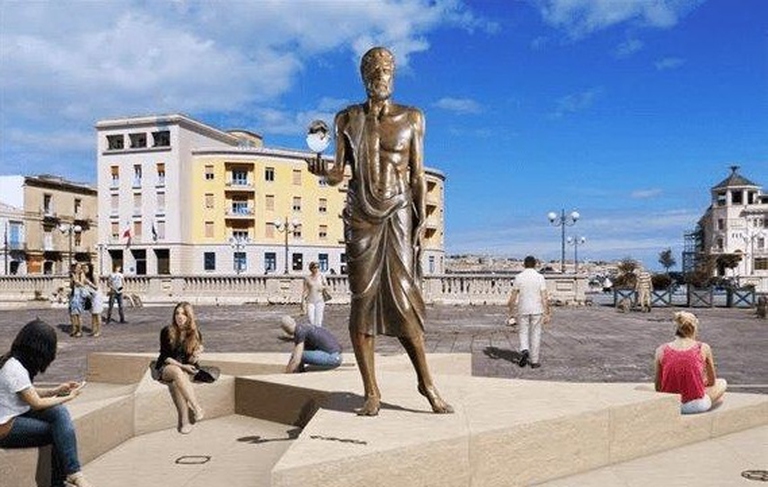
Homecast is a podcast series recorded in quarantine in which creatives from around the world share their lived experiences of these unique circumstances. Creator Giacomo De Poli tells us why this collective diary was needed now more than ever.
In the United States, the 14th of March is written as 3/14, the first three numbers of pi. For this reason, the world celebrates “Pi day” on this date.
The first celebration of Pi day was organised by Larry Shaw in 1988 at the San Francisco Exploratorium. The physicist proposed a parade around one of the circular spaces of the museum and the consumption of fruit pies. Today, math geeks around the world continue to celebrate Pi day, by preparing pies and consuming them.
To properly celebrate Pi day you should wait until 15:00 of 14 March: 3.1415 is a more accurate approximation of pi.
It’s an irrational number, that can’t be expressed as a ratio between whole numbers; it’s commonly rounded up to the first two decimal places. It is a constant, the ratio of a circle’s circumference to its diameter. And it was discovered by Greek mathematician Archimedes.
He was born in Syracuse, a Greek (Doric) city in Sicily, around 287 B.C. Soon, he moved to Alexandria, Egypt, where various intellectuals and scientists came to study and exchange ideas. Finally, he went back to his native city where he was killed in 212 B.C. during the Roman siege of Syracuse; according to the legend, he would have been caught by a Roman soldier while contemplating a calculation and killed because he didn’t obey the soldier’s order to give his name. Besides discovering pi, Archimedes wrote a number of treaties on spheres, cylinders and conoids; he invented the water screw, the pulley, the lever, bruning glass and the catapult.
According to a study conducted by the Municipality of Syracuse on the most important tourist attractions, 80% of Italians know who Archimedes is, but just 20% of them know that he was born in the city of Syracuse. To “compensate” this, on Sunday 13 March 2016 a statue depicting the mathematician was placed at the entrance to the island of Ortygia, where the historic city centre was located. The statue is 2.60 metres high but together with the pedestal it stands 3.20 metres high.
Siamo anche su WhatsApp. Segui il canale ufficiale LifeGate per restare aggiornata, aggiornato sulle ultime notizie e sulle nostre attività.
![]()
Quest'opera è distribuita con Licenza Creative Commons Attribuzione - Non commerciale - Non opere derivate 4.0 Internazionale.
Homecast is a podcast series recorded in quarantine in which creatives from around the world share their lived experiences of these unique circumstances. Creator Giacomo De Poli tells us why this collective diary was needed now more than ever.
Time magazine’s 100 Women of the Year project sheds light on influential women’s stories, from Amelia Earhart to Greta Thunberg. A selection of some of the greats for International Women’s Day.
Leaving cliches behind, beauty and sexuality in old age are widely unexplored topics. Photographer Arianne Clément tells why she chose to shed light on this universe.
Un violador en tu camino – the rapist is you – is an anthem protesting the impunity of gender-based violence. It began in Chile and has become a global flash mob, bringing people to the streets and resonating all over the world.
The Oxford English Dictionary has chosen “climate emergency” as 2019’s Word of the Year because of its effectiveness in communicating a sense of urgency in the fight against global warming.
Filmmaker Dhondup Wangchen was imprisoned by the Chinese government for his documentary condemning the Tibetan condition. He tells us how he continues to fight for his people even after the traumas faced.
To mark the release of Anthropocene: The Human Epoch, we interviewed photographer and co-director Edward Burtynsky, who told us the story behind the documentary.
Snowflakes can be deceiving. Banksy transformed them from a marker of winter festivities into a symbol of the plague of air pollution in his mural Season’s greetings in Port Talbot, Wales.
Artist Jeff Hong imagined how Disney fairy tales’ characters would live in the real world: the result – or better the ending – is everything but happy.









